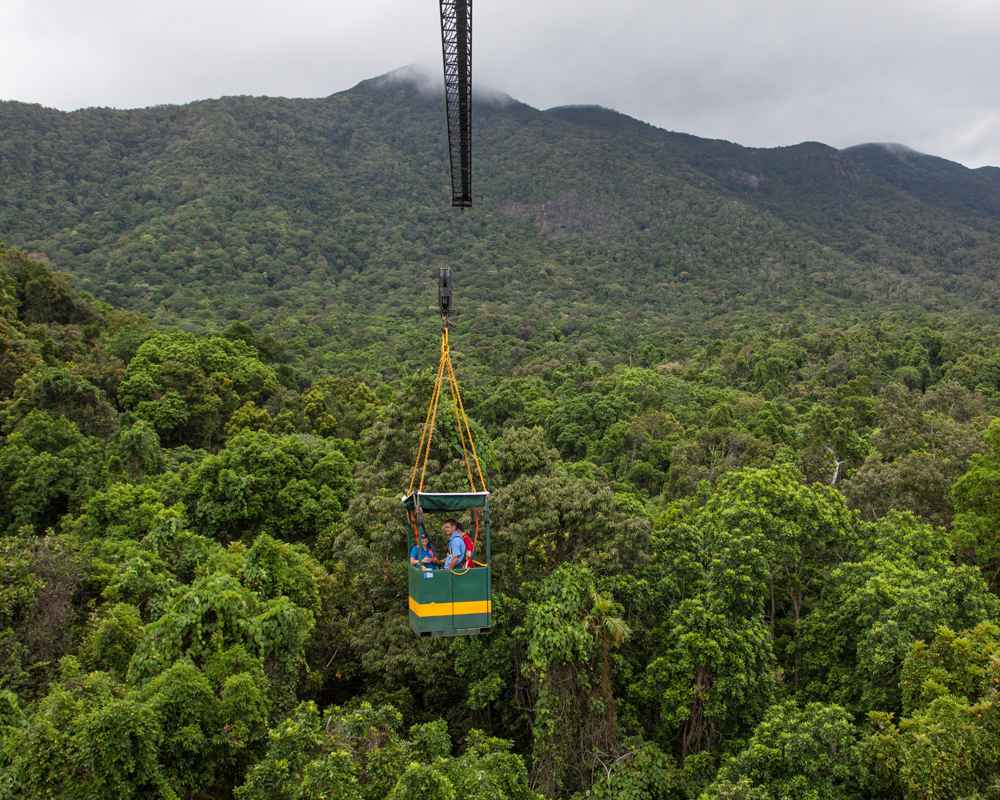
JCU Daintree Rainforest Observatory
JCU is Australia’s leading tropical research university and one of the best tropical universities in the world to conduct research in ecology, environment, plant and animal science, geoscience, and marine science.
Maybe you already knew that James Cook University is the closest university to the Great Barrier Reef, but did you also know that the oldest rainforest in the world is also nearby? The Daintree Rainforest is the largest continuous rainforest in Australia, full of unique flora, fauna, and living fossils, and just a 2-hour drive from JCU’s Cairns campus.
Climate, Flora, and Fauna
With an average annual rainfall of 3500 mm, the Daintree lives up to its name as being a rainforest. Summers and hot and humid while winters and mild and dry, with rainfall being strongly seasonal. 70% of rainfall comes during the wet season of December to April! In fact, the tropical cyclones that make their way through Northern Australia during this time of year and contribute to this rainfall are considered a key evolutionary factory that has shaped the area’s ecology.
A complex canopy and subcanopy of trees and vines make up this spectacular rainforest, with trees reaching up to 40 metres in height. Woody lianas, vascular epiphytes, feather and fan palms, zingibers, and aroids are just a few of the greens that make a home for a wide array of animals.
Speaking of animals, over seven hundred species of vertebrates live within this expanse of lush vegetation: striped possums, Bennett’s tree-kangaroos, prehensile-tailed rats, fawn footed Melomy’s, long-nosed bandicoot, and a variety of bats, are just a few that call the forest home.
You’ll also spot a wide range of birds, including several dove species and honeyeaters, spotted catbirds, orange-footed scrubfowls, lesser sooty owls, and various parrots. You could even come across a modern-day dinosaur, the cassowary.
We haven’t forgotten the frogs and reptiles! Boyd’s forest dragons, eastern water dragons, carpet and amethystine physios, and two colubrid snakes are just a few that you may come across while in the Daintree.
Rainforest Field Station
Located just south of Cape Tribulation in a World Heritage Area, the JCU Daintree Rainforest Observatory (DRO) Research Facility is perfectly situated in one of the few areas in the world where reef meets rainforest. The focus of the project is on the rainforest and providing faculty, students, researchers, and even high school groups with hands-on research experience.
Given its special location, the facility is environmentally sensitive while still maintaining labs, conference facilities for 100 people, flexible covered and protected outdoor spaces and various accommodation options for up to 56 staff, researchers, and groups.
Pre-fabricated pods with semi-enclosed link spaces respond to and interact with the tropical environment, designed to catch a breeze and eliminate the need for air conditioning. The facility even provides its own power using a combination of batteries and solar power to run equipment and lights, harvests rainwater for its water supply, and uses a specialized aerated sewage system to treat water after use.
Perhaps the most unique feature though? The giant canopy crane that will lift you high above the tree tops! It’s not just for a fun ride though. The crane allows researchers and students to look really closely at the whole rainforest, from the ground to the top of the canopy and even the air.
*




































Ask A Question
Ask us about your program of interest, or if you have a question about our services.
CONTACT US TODAY